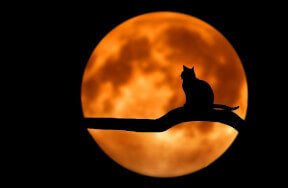Have you ever wished upon a shooting star? Are you sure it was a shooting star? Next time you catch a glimpse of a gleaming, falling object in the night sky, you might be witnessing the passing of a comet.
Since comets are made from dust and ice they are also known as "dirty snowballs" or "icy mudballs." The ice portion of the comet isn't just made of water, but also frozen gases that burn off when the comet nears the sun. When the gases burn off it ends up looking like the comet is glowing.
The comet follows a path (called an orbit) around the sun just like the planets. However, while the earth takes 365 days to go once around the sun, it takes the average comet a few hundred years to do the same. Comets are only visible to the human eye when they get close to the sun, which means we can only see them for a few months every few hundred years. Once a comet has passed by the sun about 500 times, (which will take hundreds of thousands of years) all of its gases will burn off and the comet will end up looking like an ordinary meteor or asteroid.
The comet is made up of five distinct parts:
So, how does somebody discover a comet? Well, comet hunters usually spend hundreds of hours scouring the night sky. Luckily Kidzworld has put together some tips for the amateur comet watcher to save you some time.
Now you're ready to be the biggest astronomy buff on the block. Good luck and happy hunting!
Related Stories:






























